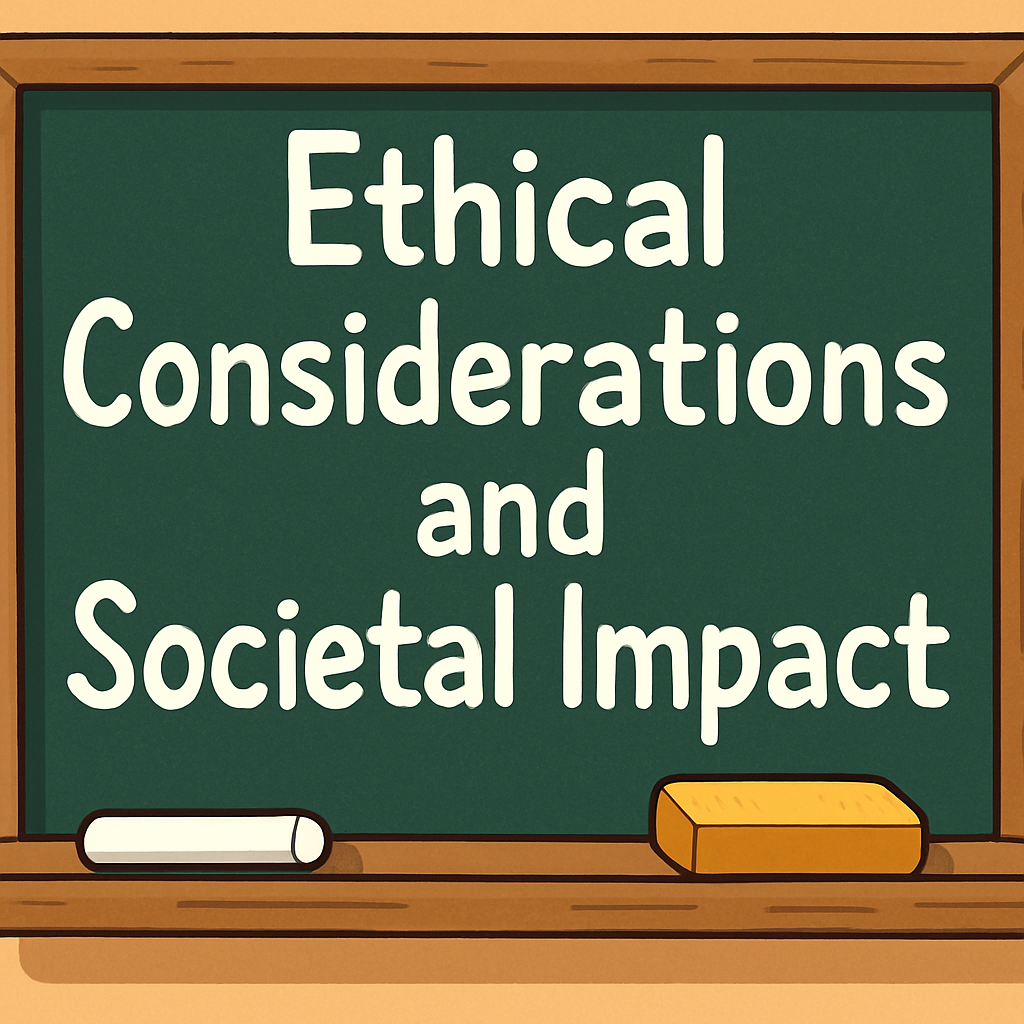 In this lesson, you will examine the ethical, legal, and societal implications associated with utilising AI for content generation. It is essential to understand these aspects, as AI, while offering opportunities for creativity and enjoyment, also carries significant real-world consequences. You will delve into key topics such as bias, deepfakes, and privacy concerns, and consider strategies for employing AI in a responsible manner.
In this lesson, you will examine the ethical, legal, and societal implications associated with utilising AI for content generation. It is essential to understand these aspects, as AI, while offering opportunities for creativity and enjoyment, also carries significant real-world consequences. You will delve into key topics such as bias, deepfakes, and privacy concerns, and consider strategies for employing AI in a responsible manner.
 Ethics in artificial intelligence involves carefully considering what is right and wrong in the development and application of this technology. AI can generate impressive images, audio, and videos, facilitating creativity and innovation. However, it is crucial to recognise that these capabilities can also lead to unintended consequences, such as the spreading of false information or the infringement of personal privacy.
Ethics in artificial intelligence involves carefully considering what is right and wrong in the development and application of this technology. AI can generate impressive images, audio, and videos, facilitating creativity and innovation. However, it is crucial to recognise that these capabilities can also lead to unintended consequences, such as the spreading of false information or the infringement of personal privacy.
At the core of AI ethics is the process by which AI systems learn from data. AI models are trained on vast datasets, and if these datasets contain biases—such as imbalances in representation of genders, ethnicities, or cultures—the resulting outputs can lead to unfair or discriminatory results. For instance, an AI image generator might consistently depict professionals like doctors or engineers as belonging to a specific gender or ethnic group, thereby reinforcing stereotypes.
An appropriate illustration is found in AI tools used for recruitment purposes. Certain systems have demonstrated bias against particular demographic groups due to training on unbalanced data, which has resulted in unequal employment opportunities and raised significant concerns about fairness in the workplace.
 Bias in AI algorithms occurs when artificial intelligence systems produce unfair or discriminatory outcomes due to imperfections in their training data. This can happen because AI models learn from large collections of information, and if that information reflects existing prejudices in society—such as imbalances in the representation of different genders, ethnicities, or cultures—the AI may replicate and amplify those prejudices in its outputs.
Bias in AI algorithms occurs when artificial intelligence systems produce unfair or discriminatory outcomes due to imperfections in their training data. This can happen because AI models learn from large collections of information, and if that information reflects existing prejudices in society—such as imbalances in the representation of different genders, ethnicities, or cultures—the AI may replicate and amplify those prejudices in its outputs.
Consider an AI image generator that has been trained primarily on data reflecting cultural imbalances. As a result, when prompted to create images of people in various professions, it might consistently depict certain roles in ways that favour one culture or background over others, thereby promoting harmful stereotypes.
Imagine using an AI tool to create images of pets for a classroom project. If the AI is biased, it might mostly generate images of certain popular breeds like golden retrievers while rarely showing other kinds of dogs or animals. This is not fair, as it fails to represent the variety of pets that exist and can give an inaccurate impression of the real world.
 In this step, you will explore how AI translation tools can introduce bias when converting text from one language to another. These systems learn from large datasets; if that data contains stereotypes or uneven representation, translations can reflect those patterns (for example, assigning a gender to a profession or shifting tone). Understanding this helps you read translated content more critically.
In this step, you will explore how AI translation tools can introduce bias when converting text from one language to another. These systems learn from large datasets; if that data contains stereotypes or uneven representation, translations can reflect those patterns (for example, assigning a gender to a profession or shifting tone). Understanding this helps you read translated content more critically.
Translate the sentences below using an online translator. Then, check for gender assumptions, tone shifts, or lost nuance. Rewrite a more neutral English version if needed.
These examples show how AI translations can introduce unintended bias or change tone by making assumptions not present in the original text. This often happens because the translation model is trained on imbalanced datasets that reflect real-world stereotypes or lacks the cultural nuance needed to preserve meaning.
</ Deepfakes refer to sophisticated artificial intelligence-generated videos, images, or audio that appear authentic but are entirely fabricated. These creations can manipulate reality, such as producing a video of a public figure uttering words they never spoke or performing actions they never undertook. The primary concern with deepfakes is their potential to spread misinformation, that can deceive individuals and influence public opinion.
Deepfakes refer to sophisticated artificial intelligence-generated videos, images, or audio that appear authentic but are entirely fabricated. These creations can manipulate reality, such as producing a video of a public figure uttering words they never spoke or performing actions they never undertook. The primary concern with deepfakes is their potential to spread misinformation, that can deceive individuals and influence public opinion.
The creation and sharing of deepfakes pose significant ethical challenges because they can erode trust in media and information sources. For instance, in everyday scenarios, a deepfake might be used to create humorous content, but when applied maliciously, it can lead to serious consequences, including reputational damage or societal unrest.
Consider a deepfake video showing a celebrity endorsing a product they never actually supported. This could mislead consumers into buying something based on false information and damage the celebrity's reputation.
As AI technology becomes more accessible, it is crucial to recognise how deepfakes contribute to a broader landscape of misinformation. This not only affects individuals by confusing fact from fiction but also has wider societal implications, such as undermining journalism and fostering distrust in institutions. By understanding these issues, you can become a more informed user of technology and help promote a more truthful digital environment.